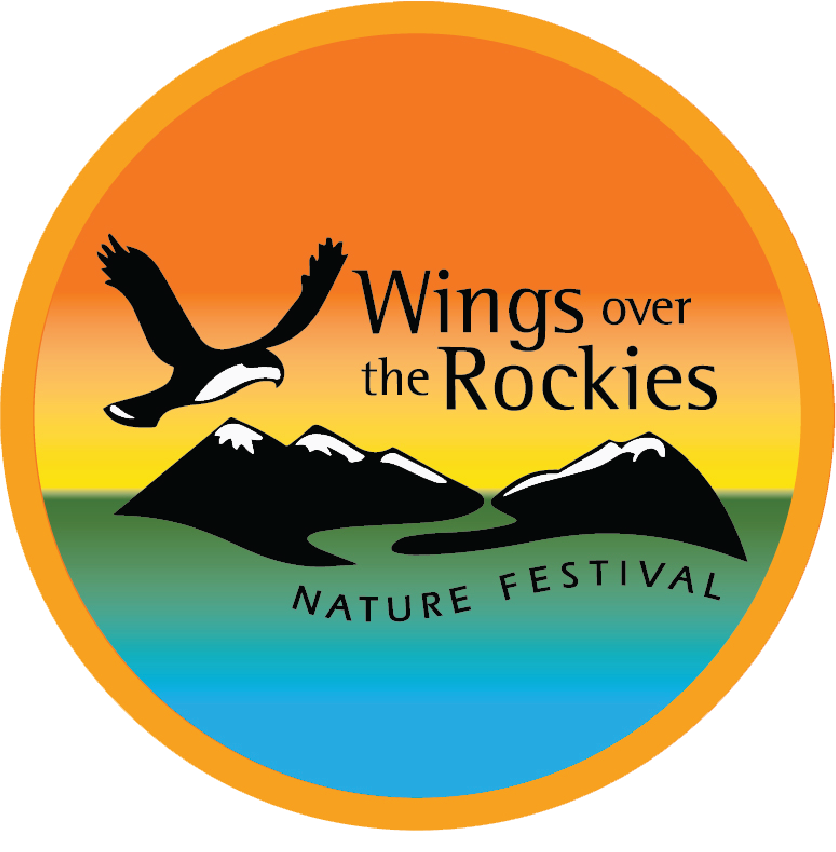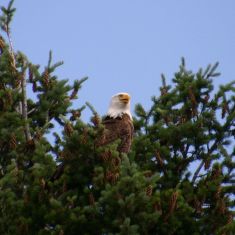
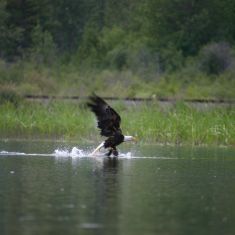
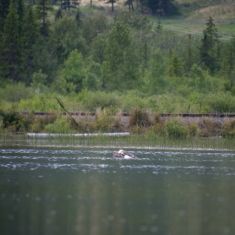
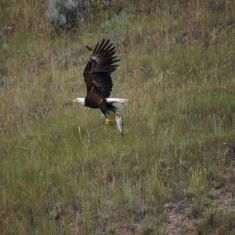
During a hike in the Columbia Wetlands Hilda Jensen saw this Bald Eagle fishing. She managed a series of shots as the eagle was pulled under by the very fish it was catching. Once Bald Eagles insert their talons in prey, they cannot release them until they can stand on their own legs. If the fish is too strong for the eagle to pull out of the water, the eagle can drown. Here we see the fish pulling the eagle under. Fortunately it wins the struggle and safely flies back to the nest with supper.
Soaring high on currents of rising warm air, Bald Eagles can reach speeds in excess of 40 miles per hour. When they dive for a fish in the water, they can reach speeds of over 75 miles per hour! They can be found throughout North America, including most of Canada and Alaska, all of the continental United States, and northern Mexico. The further north they are born, the larger in size they become.
The Bald Eagle’s scientific name is Haliaeetus leucocephalus. This name comes from the following four Greek root words: hali (salt), aeetus (eagle), leuco (white), and cephalis (head). Put all that together and the Bald Eagle is a white-headed sea eagle! Bald Eagles are mainly brown with a white head and tail. You may be wondering why they’re called “bald” when they obviously have white feathers on their heads. The name actually comes from an old English word — piebald — which meant “white-headed” rather than hairless. Mature Bald eagles beaks are yellow, young eagle’s beaks are black with a tip of yellow. Female eagles are larger than males.
Bald Eagles mainly eat fish so they usually live near large bodies of open water. Here in the Kootney’s they enjoy the abundant waters of the Columbia River and Windermere Lake. They usually choose to nest in tall conifers or hardwood trees and their nests grow in size year after year, some weighing up to the size of a small car. Some eagles are now staying the winter in the Kootenay’s. Their meal is subsidized by the ice fishermen who share their catch when the lake is frozen over.
As you watch a Bald Eagle soar, it is a majestic sight. It is good to know that with the care and protection of their habitats, they are no longer an endangered species.
